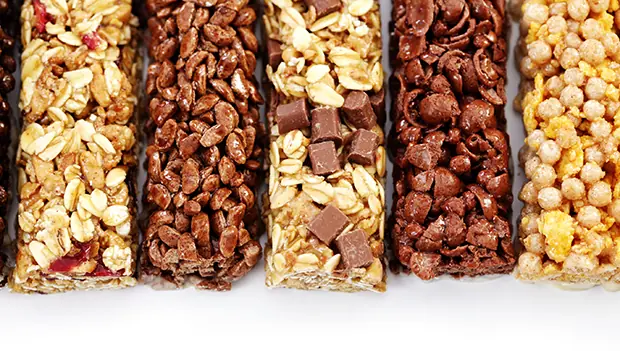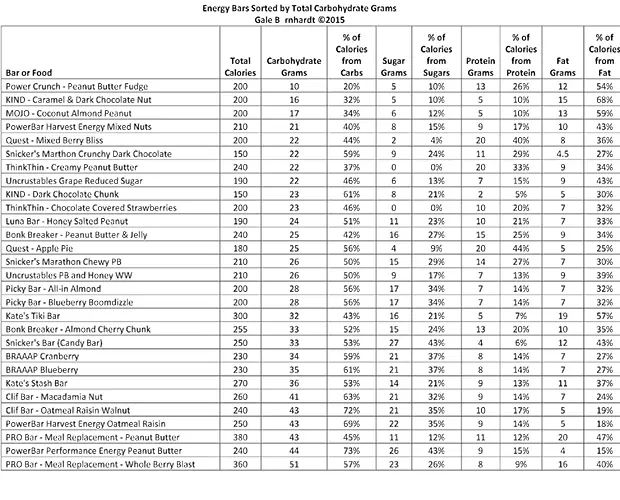
Athletes consume energy bars for a variety of reasons, including fuel during a workout or race; using a bar as a meal replacement; and noshing on a bar as a snack. Endurance workout and race durations can vary wildly from around 20 minutes to 17 hours or more. Generally, it's not necessary to consume an energy bar for a workout or race that is shorter than 90 minutes.
Which energy bar you choose for any situation depends on your current daily diet composition, food preferences, food allergies and dietary goals. Below, you will find a comparison of various energy-bar-type foods that endurance athletes are known to consume. This chart is sorted by the total number of carbohydrates contained in the bar, beginning with the lowest and ending with the highest.
Nutrition Events Near You
More: Athlete Food: DIY Energy Bars
Looking further, you can see that the percentage of calories in each bar coming from carbohydrates tracks closely, but is not exactly the same (low to high), as total carbohydrate grams. This is because of the variation in total calories contained in each bar.
Also take note of the grams of sugar contained in each bar. Though the chart is sorted by carbohydrate grams, some of the bars have a very high percentage of calories coming from sugar.
More: 64 Food Label Nutrition Terms You Should Know
The remaining two macronutrients, protein and fat, do not follow any particular pattern when the bars are sorted by carbohydrate grams.
When choosing an energy bar, know that there is wide variation in macronutrient breakdown, added sugars and total calories. Choose wisely.

 Find more nutrition tips.
Find more nutrition tips.



